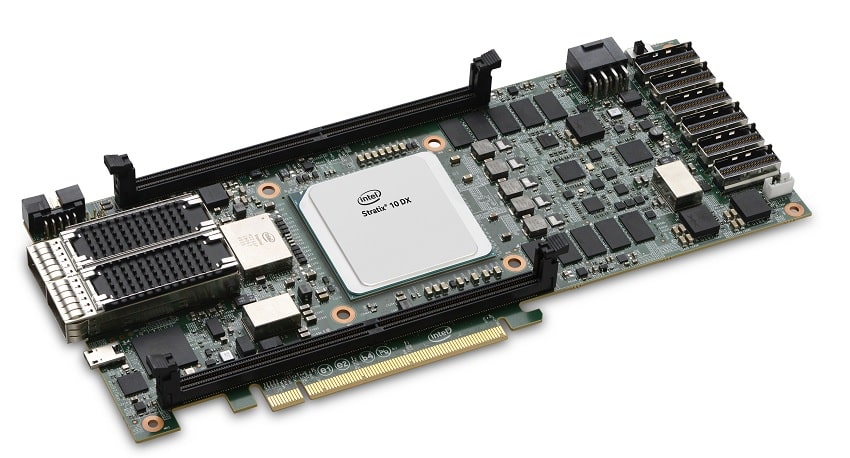
Today Intel announced they have started shipping Intel Stratix 10 DX field programmable gate arrays (FPGAs). So far, they are only shipping to early access program participants like VMware. Unlike the rest of the Stratix line, the new Stratix 10 DX FPGAs do not support third-gen PCI-Express (PCIe), only PCIe Gen4x16.
The new Intel Stratix 10 DX FPGAs are the first, and so far only, FPGAs designed to support Intel Ultra Path Interconnect (Intel UPI). Intel is claiming that when paired with future Intel Xeon processors that also support UPI, the new cards will have 37% lower latency compared to cards that can only communicate over PCIe-4. Like all Statix 10 products, the DX cards are built on a 14nm tri-gate architecture.
There are three Intel Stratix 10 DX FPGA models. The high-end DX 2800 is tied with the Intel's top-end TX & GX FPGAs for most logic elements of any Stratix 10 with 2,753,000 logic elements. The DX 2100 sacrifices some of the logic elements and other processing advantages of the 2800 in exchange for gaining up to 8GB of High Bandwidth Memory 2 (HBM2) DRAM at 512GBps bandwidth. Intel went in a very different direction with the DX 1100. At 1,325,000 logic elements, it has less than half as many as the DX 2800. Making use of the freed-up space is a 64-bit quad-core Arm Cortex-A53 Hard Processor Subsystem.
Availability
Immediately
Sign up for the StorageReview newsletter

